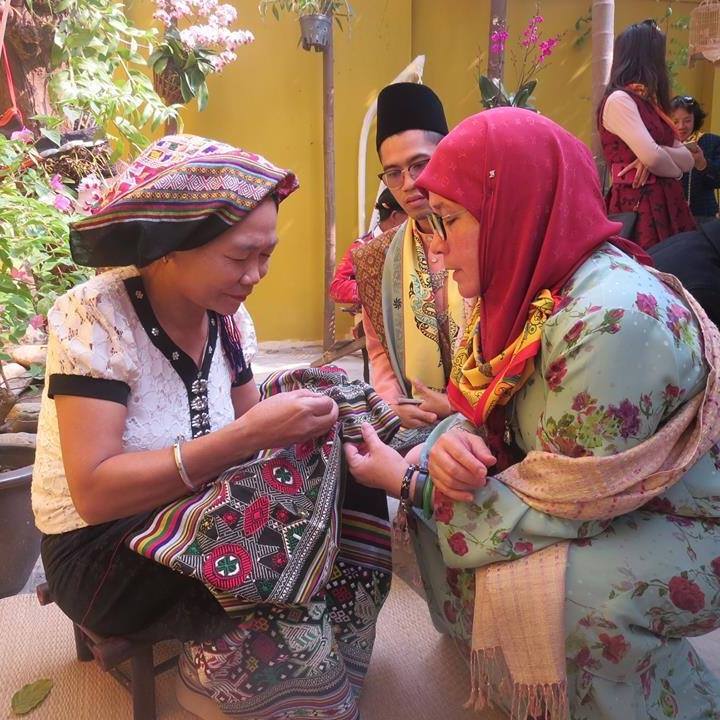Tailor Made Holidays with our travel experts
We'll do our best to call you within 48h

Thai ethnic minority people in Con Cuong district
Quy Chau has been being home of ethnic minority people for a long time. Nowadays, about 75% of local population is Thai people possessing their own unknown cultural characteristics. Here, you will take part in fantastic adventures into jungle and caverns, enjoy Thai’s tradition rituals and folklores of “xen ban”, “xen muong”, “cau mua” – “praying for rain and harvest”, “xuoi”, “lam”, “khap”, etc… performed with their various traditional instruments such as “khen be” (pan-pie), “khen moi” (lips panpipe), “khen la” (leaves panpipe) or watch Thai women working with their looms. This region has also been the very cradle of culture and tradition of Southwestern Nghe An for thousands years.
Tho ethnic minority people in Nghia Dan, Quy Chau districts.
Living area of Tho people lies at intersection point of various migration movements caused by historical upheaval in the past centuries, such as Muong’s migration southward from Western Thanh Hoa and Viet’s migration westward from Quynh Luu, Dien Chau and Thanh Chuong regions. Those people, with specific characteristics, has cast an impact on Tho people. Their main food has switched from sticky rice to those of Kinh people, with white-edge trousers, long black shirts, purple crepe turbans, woman also wear white blouses with lace collar together with That’s skirts. Tho people live in house and stilts, worship various deities and spirits especially those who contributed to protecting and building their country. Here, there are many unique traditional rituals and customs, especially in weddings and funerals.
Dan Lai ethnic minorty people in Con Cuong district
With Choang and Khang streams blowing from Upper Laos through Con Cuong, Pu Mat natural reserve has come a perfect living zone of Dan Lai built temporary tents from tree branches and leaves, in which thet sleep while sitting, and when those leaves turn yellow they desert their old tents and move away to build other areas. They hunt and forage their food from Mat river and Pu Mat forests.
Nowadays, Dan Lai still have settled down, feeing themselves from their difficulty and harship. Their village is now a vividly beautiful flower of the jungle. They are now speaking a hybrid language of Viet and Thai, women wear colorful brocade skirts and indio turbans, elders dye their teeth black. You may occasionally see a woman gardening by her house, looking as if a pheasant dancing cheerfully near its nest.
O Du ethnic minorty people in Tuong Duong district
The origin of Odu people is uncertain. Their language is classified along with the Mon-Khmer speaking people in the Austro-Asian linguistic family. They may have originated in Laos. Kin groups of the Odu live in Luang Nam Tha province of Laos, called Phoong. The population of the Odu people in Vietnam is decreasing rapidly. In 1995 only about eigty O Du were left in Tuong Duong district, Nghe An province, where they live in White Thai villages and work for Thai nobles.
Fo the Odu, the new year begins on the day when the thunder rolls for the first time in early spring. In beliefs and religion, the O Du are close to the Thai. They believe in the spririt of the house, who watches over the family.
Being so small a minority, the O Du people are being intergrated into a more populous ethnic monority, Most of their tribe members are forgotten their mother language and those who still speak it are highly respected. The husband decides all family affairs. Women have no right of inheritance. A widow whishing remarry has to wiat for the first thunder which marks the definitive of the late spouse.
The Odu grow cotton, weave cloth, and some also rear silkworms. Women and men dress like th White Thai in the same region. They know how to make objects from wood and plainted bamboo. The Odu live in a small houses on stilts, the floor and the walls are of bamboo, the roof is thatched. A ladder leads to a small porch in front of the entrance. The house has only one room with 02 fireplaces, one for cooking food and the other for religious purposes.
The Odu are sedentery farmers who spend much of their time in swidden agriculture although uncertain crop yields force them to reply heavily at times on gathering or hunting. The small population of the Odu in Vietnam works for White Thai nobles who usurped all the land, forests and mountains in the region. In return for their work, they were give the right of residence, and all allowed to reclaim land and cultivate burnt over land